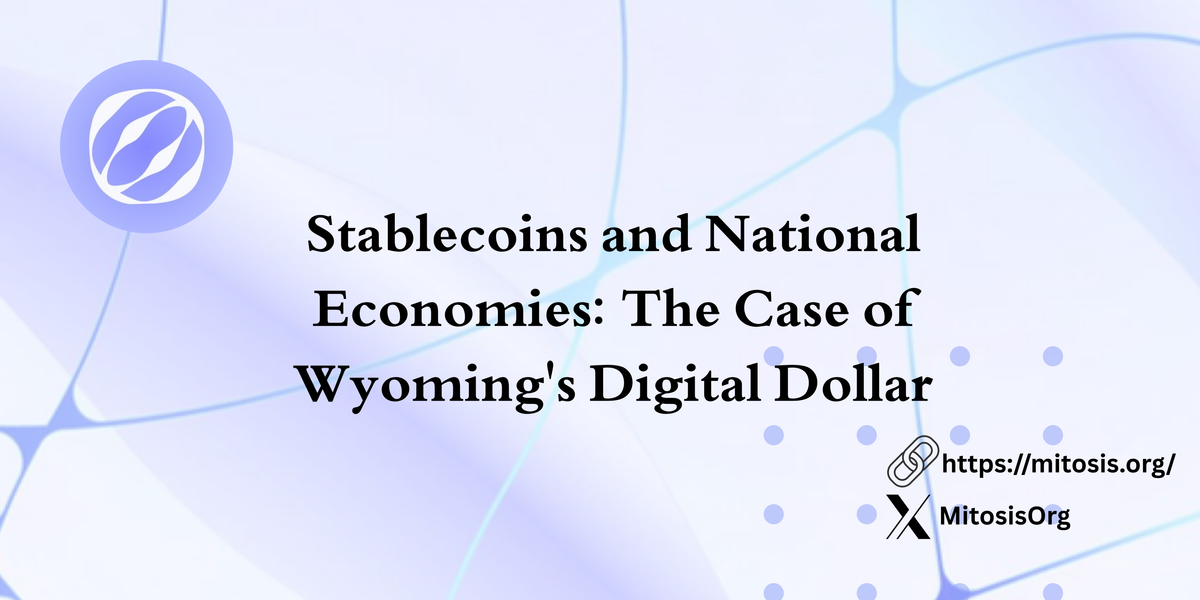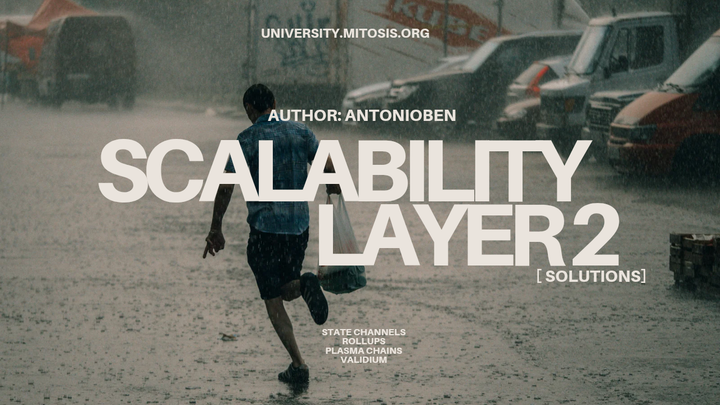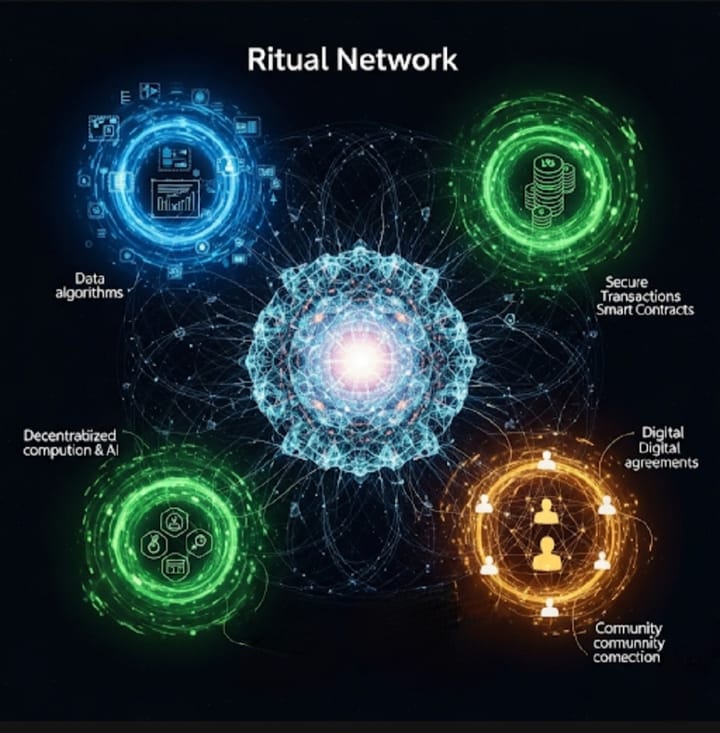Stablecoins and National Economies: The Case of Wyoming's Digital Dollar

Wyoming’s planned launch of the Wyoming Stable Token (WYST) marks the first U.S. state–issued, fully reserved stablecoin, backed by cash and short-duration U.S. Treasuries held in public trust. By directing the interest income to its School Foundation Fund, Wyoming aims to create a sustainable revenue source for education without raising taxes. See WyoFile. Technically, WYST leverages LayerZero’s Omnichain Fungible Token (OFT) standard across multiple testnets—Ethereum, Solana, Avalanche, Arbitrum, Optimism, Polygon, and Base—demonstrating true cross-chain interoperability. See GovDelivery. Integrating WYST into DeFi platforms like Mitosis could unlock novel yield strategies, combining state-grade stability with programmable liquidity through Matrix Vaults and Ecosystem-Owned Liquidity (EOL) governance .
Legislative Foundations: The Wyoming Stable Token Act
In March 2023, Wyoming passed SF0127—the Wyoming Stable Token Act—creating the Wyoming Stable Token Commission (WSTC) to oversee issuance and management of a state-backed stablecoin. The law requires each WYST to be redeemable 1:1 for U.S. dollars held in trust by the state, with a legal mandate to maintain at least 102% reserves in cash and short-term Treasuries. See Wyoming Legislature. This framework provides legislative certainty, ensuring token holders and financial institutions can trust the coin’s backing and redeemability.
My Analysis: By codifying 1:1 backing and over-collateralization, Wyoming addresses central concerns around depegging and reserve management, crucial for institutional adoption. The WSTC’s public fiduciary duty parallels a bank’s reserve requirement, aligning WYST with traditional financial safeguards while leveraging blockchain’s transparency.
Technical Architecture: Multi-Chain Interoperability
WYST’s technical rollout enters a critical testing phase in Q1 2025, deploying smart contracts on seven testnets: Ethereum, Solana, Avalanche, Arbitrum, Optimism, Polygon, and Base. LayerZero Labs’ Omnichain Fungible Token (OFT) standard enables atomic, trust-minimized transfers between these networks via its Stargate bridge, demonstrated by a successful Ethereum⇄Avalanche test transaction. See GovDelivery.
My Analysis: Multi-chain deployment future-proofs WYST against network-specific congestion and positions it for broad utility. By using OFT, Wyoming avoids reliance on custodial bridges, reducing counterparty risk and supporting near-instant, low-fee cross-chain settlements—key for real-world payments.
Economic Model: Funding Education via Treasury Interest
Wyoming plans to place WYST reserves into short-duration U.S. Treasury securities and repurchase agreements, generating interest income estimated at millions annually. Bloomberg reports the state expects to channel these earnings directly into its School Foundation Program, creating a perpetual funding stream for education without new taxes. See Bloomberg.
My Analysis: This novel revenue model transforms stablecoins from mere payment tokens into public finance instruments. By aligning state budgets with U.S. debt holdings, Wyoming flips the traditional debtor–creditor dynamic: instead of private or foreign holders earning interest, the state—and by extension its citizens—capture yields to support public services.
Privacy, Security, and Regulatory Considerations
Although WYST is not a federal CBDC, Wyoming’s approach emphasizes privacy. The WSTC assures that user data will be protected, implementing anti–money laundering (AML) and know-your-customer (KYC) checks only where legally required, while preserving retail transaction confidentiality. See WyoFile. Moreover, over-collateralization and mandated audits reduce the risk of reserve mismanagement.
My Analysis: Balancing transparency with privacy is critical. Wyoming’s design—publicly auditable reserves combined with privacy-preserving KYC guards—could serve as a blueprint for other jurisdictions wrestling with the trade-offs between surveillance and financial inclusion.
National and Global Implications
Wyoming’s stablecoin could pave the way for wider state- or municipal-issued tokens, challenging the notion that only central banks or private entities can issue dollar-backed digital currency. By offering a clear legal framework and public accountability, WYST may catalyze broader legislative momentum in the U.S., akin to the EU’s MiCA or Singapore’s Payment Services Act. See Global Government Fintech.
My Analysis: If other states follow suit, the cumulative network could represent a multi-trillion-dollar reservoir of U.S. debt held on-chain, strengthening dollar demand and hedging against foreign central bank sell-offs. This distributed issuance model may also counterbalance geopolitical risks to dollar hegemony.
Integrating WYST with Mitosis’s DeFi Infrastructure
Mitosis’s programmable liquidity primitives offer natural use cases for WYST:
- Matrix Vaults: Users could deposit WYST into Matrix Vaults, receiving miWYST tokens that represent pooled state-backed assets. These vaults could automatically allocate a portion of capital into short-duration Treasuries or yield strategies, distributing returns in real time .
- Ecosystem-Owned Liquidity (EOL): WYST liquidity pools governed via EOL allow token holders to propose and vote on how the collective reserves are deployed—e.g., choosing between 1-month vs. 3-month T-bill ladders—ensuring on-chain democracy over public finance outcomes .
- Cross-Chain Settlement: Using Hyperlane’s permissionless messaging, Mitosis can seamlessly settle WYST transfers across rollups and other chains, enabling merchants and dApps to accept WYST payments anywhere in the crypto ecosystem without manual bridge operations . See https://university.mitosis.org/hyperlane-and-mitosis-pioneering-the-future-of-cross-chain-defi/
My Analysis: By combining WYST’s state-backed stability with Mitosis’s DeFi tooling, developers can build next-gen public finance dApps—such as education bonds, municipal payroll systems, or grant-disbursement platforms—on transparent, efficient blockchain rails.
Challenges and Risk Mitigation
- Regulatory Alignment: Coordination with federal regulators (SEC, FinCEN) will be essential to avoid conflicts with securities laws or CBDC debates.
- Reserve Audits: Regular, third-party attestation of WYST reserves is critical to maintain trust.
- Operational Security: Smart-contract formal verification and layered security audits (potentially automated by AI tools) can preempt exploits.
My Analysis: Proactive governance, continuous auditing, and community oversight via Mitosis’s EOL model can mitigate these risks, ensuring WYST’s long-term sustainability.
Conclusion
Wyoming’s WYST bridges blockchain innovation with public fiscal needs, creating a state-run stablecoin that funds education while preserving dollar stability. Its multi-chain interoperability and transparent reserve management set new standards for digital public currency. Integrating WYST with DeFi infrastructures like Mitosis—through Matrix Vaults, EOL governance, and Hyperlane settlement—can unlock programmable public finance, empower citizens with on-chain voting rights over state funds, and cement Wyoming’s role as a blockchain pioneer. As WYST prepares for its July 2025 debut, its success may well chart the course for other jurisdictions to follow, heralding a new era of decentralized, accountable public finance.
🔗Links:



Comments ()